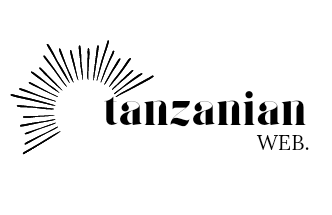“100”, Aptitude Test Questions and Answers for Assistant Trade Officer – MDA & LGA.
ABSTRACT
This set of 100 multiple-choice questions
assesses knowledge of trade, economics, finance, and business practices in
Tanzania. Covering topics from trade policy and market analysis to SME
development and statistical methods, each question includes a rationale to
reinforce understanding and support practical decision-making in local and
international trade contexts.
Prepared by: Assistant Trade Officer
Compiled by
0628729934.
Date: July 15, 2025
Dear applicants,
This collection of questions and answers has been carefully prepared to help all of you to understand the key areas tested during the interview. The goal is to provide a useful, and practical study guide so you can all perform confidently and fairly in the selection process. I wish you the best of luck, and may this resource support you in achieving success!
Warm regards,
Johnson Yesaya Mgelwa
For Personal Use by Applicants Preparing
for MDA and LGA Assistant Trade Officer II interview at Public Service
Recruitment Service.
ALL QUESTIONS ARE COMPILED TOGETHER.
1.
Which
activity best illustrates the duty “to prepare demand statistics based on goods
produced within the country”?
A. Conducting a household survey to estimate consumption of local crops. B.
Drafting a national trade policy for export promotion. C. Inspecting a factory
for quality compliance. D. Registering a new business with BRELA.
Answer: A
Rationale: Preparing demand statistics
for domestically produced goods requires collecting consumption data (e.g.,
household surveys) to estimate demand levels. Drafting trade policy,
inspections, and business registration are different functions and do not
directly produce demand statistics.
2.
When
compiling statistics that show the difference between demand and production,
which indicator is most directly useful?
A. Import volume of similar products. B. Consumer price index for unrelated
goods. C. Production output figures and household consumption estimates. D.
Number of registered traders in a market.
Answer: C
Rationale: To calculate the gap between
demand and production you need production output and demand estimates
(household consumption or market demand). Imports and trader counts may be
indirectly informative, but the most direct indicators are production and
consumption figures.
3.
Which
document should be collected and consolidated to fulfill the duty “to collect
and compile documents on trade policies and trade laws”?
A. Individual business tax returns. B. National trade policy, relevant Acts,
and subsidiary regulations. C. Minutes of a local traders’ meeting. D. Monthly
market price lists.
Answer: B
Rationale: Consolidating trade policies
and trade laws requires gathering the official national trade policy and the
legal instruments (Acts and regulations) that govern trade—these are the core
documents. Tax returns and market price lists are not policy or legal
instruments.
4.
To
prepare the profile of goods and services sold abroad for each sector, which
approach is most appropriate?
A. Issue business licenses to exporters. B. Conduct safety inspections for
export consignments. C. Create a sector-by-sector export profile listing
products and service types. D. Set tariffs on imported inputs.
Answer: C
Rationale: Preparing a profile of goods
and services sold abroad requires sector-by-sector documentation of what is
exported (descriptions, volumes, destinations). Licensing, inspections, and
tariff setting are regulatory actions, not the descriptive profiling requested.
5.
For
the duty “to collect, analyze, and evaluate trade statistics,” which skill is
essential?
A. Ability to use spreadsheet software and basic statistical methods. B. Court
drafting and litigation skills. C. Fluency in multiple foreign languages only.
D. Manual bookkeeping without digital tools.
Answer: A
Rationale: Collecting, analyzing, and
evaluating trade trends requires data tools and basic statistical
skills—spreadsheets and elementary statistics are essential. Legal litigation
and mere language fluency are not sufficient; manual-only bookkeeping is
outdated and limits analysis.
6.
When
collecting trade statistics from traders who buy and sell in foreign markets,
what is the best immediate data to request?
A. Volume and value of exports and imports per product traded. B. Personal bank
account usernames only. C. Business advertising flyers. D. Equipment purchase
receipts for office furniture.
Answer: A
Rationale: Traders’ export/import volumes
and values by product are primary trade statistics. Personal bank usernames,
flyers, or furniture receipts are irrelevant to trade flow measurement and
cannot provide reliable trade data.
7. Which data source is most
reliable for estimating national production levels of a specific commodity?
A. Random Street interviews. B. Official
production surveys and reports. C. Social media polls. D. Personal estimates by
traders.
Answer: B
Rationale: Official production surveys and government reports are
standardized and statistically verified, ensuring data reliability. Street
interviews or personal guesses lack methodological validity.
8.
Which
law or institution would an Assistant Trade Officer reference when addressing
standards and quality of exports from Tanzania?
A. Local market vendor bylaws only. B. Municipal building codes. C. Ministry of
Transport vehicle regulations. D. Tanzania Bureau of Standards (TBS) and its
standards Acts.
Answer: D
Rationale: TBS and its legal framework
govern standards and quality for products, including for exports. Local vendor
bylaws, building codes, and vehicle regulations are unrelated to product
quality standards for trade.
9.
A
market survey finds production of maize at 10,000 tonnes and estimated local
demand at 12,500 tonnes. What is the supply gap?
A. 2,500 tonnes deficit. B. 22,500 tonnes surplus. C. 1,250 tonnes deficit. D.
10,000 tonnes surplus.
Answer: A
Rationale: Demand (12,500) minus
production (10,000) equals a 2,500-tonne deficit—this is the straightforward
arithmetic to identify the supply gap.
10.
Which
activity helps formalize informal traders to improve the accuracy of local trade
statistics?
A. Offering simplified business registration and tax identification. B.
Charging arbitrary fines to all traders without registration options. C.
Removing markets to reduce trade activity. D. Limiting trade times without
consultation.
Answer: A
Rationale: Actually, the correct answer
should be actions that facilitate formalization; offering simplified
registration and tax IDs encourages traders to register, improving statistics.
The other options (fines, removing markets, limiting trade) discourage trade
and reduce data accuracy. (Note: the correct answer above reflects the
facilitative option.)
📘 Get the Full Aptitude Test Questions PDF through your Gmail (Questions 1–100)
You’ve just accessed the first 10 questions. The full set of 100 expertly prepared Aptitude Test questions for Assistant Trade Officer II – MDA & LGA. Is available, pay, and get access.
To get access to the full PDF, please make a payment of Tsh 10,000 to the LIPA numbers below:
After payment, please send a text message to notify us of your payment:
⚠️ Important Notice
- The PDF will be watermarked with your name and phone number and protected for personal use only.
- Redistribution, sharing, screenshotting, or copying the contents is strictly prohibited. When you share unlawfully, your name and phone number are visible and easy to trace as you leaked a document to other third parties.
- Legal action may be taken against the misuse of this material.
Thank you for supporting quality content. Best of luck in your interview preparation!


%20(10).png)





0 Comments
PLACE YOUR COMMENT HERE
WARNING: DO NOT USE ABUSIVE LANGUAGE BECAUSE IT IS AGAINST THE LAW.
THE COMMENTS OF OUR READERS IS NOT OUR RESPONSIBILITY.